35.073 Monochroa palustrellus (Douglas, 1850)
Status and Distribution
Local, occasionally locally common, in southern and eastern England. Around the start of the 21st Century the moth started expanding its range nothwards and westwards turning up in Lincolnshire and Nottinghamshire, to the north of its core area, and Dorset, Gloucestershire, Monmouthshire, Somerset and Wiltshire to the west. In 2006 it was recorded on the west coast of Ireland.
The single dot in north Lancashire is a rogue dot and does not represent a valid record. It will be removed on the next refresh.

Provisional map
Finding the Moth
Larva: within the rootstock, stem or leaf petioles from April to June, pupation taking place in the rootstock during June and July although latest flight period data suggests the possibility of these processes occuring earlier in the year or maybe even a second brood.
Adult: flies at night and comes regularly to light traps where most records of this species originate.
Similar Species
Its large size, fully upturned palps and streaked forewing with pale ringed black marks make this a distinctive and easily recognised species.
Ypsolopha ustella is of a similar size and shape and one form, a strongly cream and brown streaked looking moth with a black dot in the centre of the wing at three quarters, can be superficially similar. Y. ustella lacks the pointed finger-like projection on the hindwing, the black dot at three-quarters lacks a white surround and the central eye-shaped blackish marking and pale surround found in M. palustrellus are absent from the forewing of Y. ustella.
Mainly single brooded from mid-June to mid-August. However from as far back as 1955 and 1976, and almost annually since 2006, the moth occurs from early to late September over parts of its range in an apparent small second brood.
Earliest: 25th May 2011 (VC31)
Latest: 27th September 2014 (VC13)

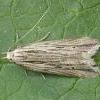
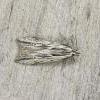
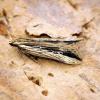
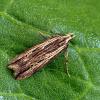
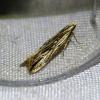
%201%20(1)_0.jpg)
%201%20(2).jpg)
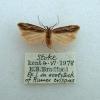
%201_0.jpg)
%203_0.jpg)
_0.jpg)
%204_0.jpg)
_0.jpg)